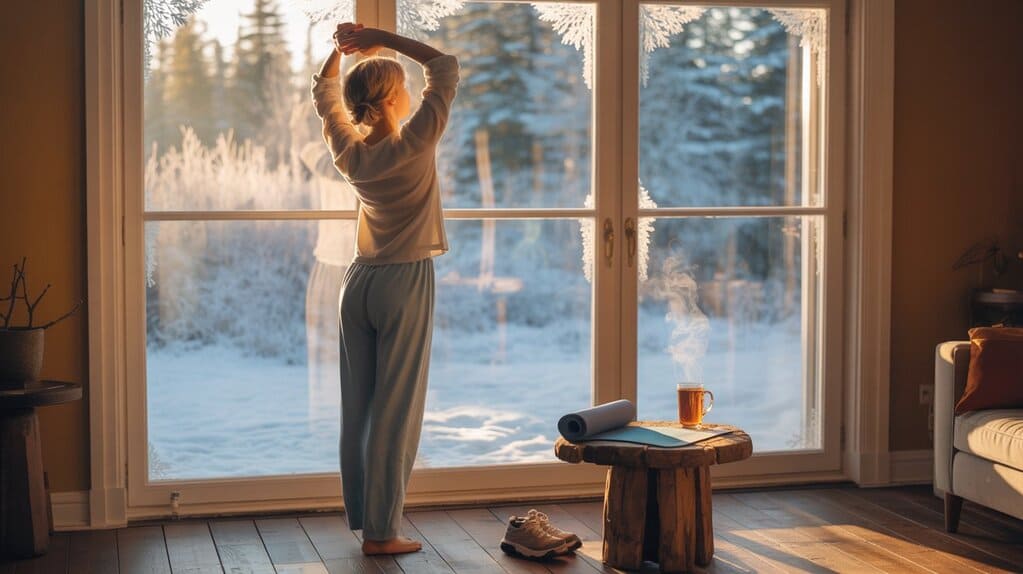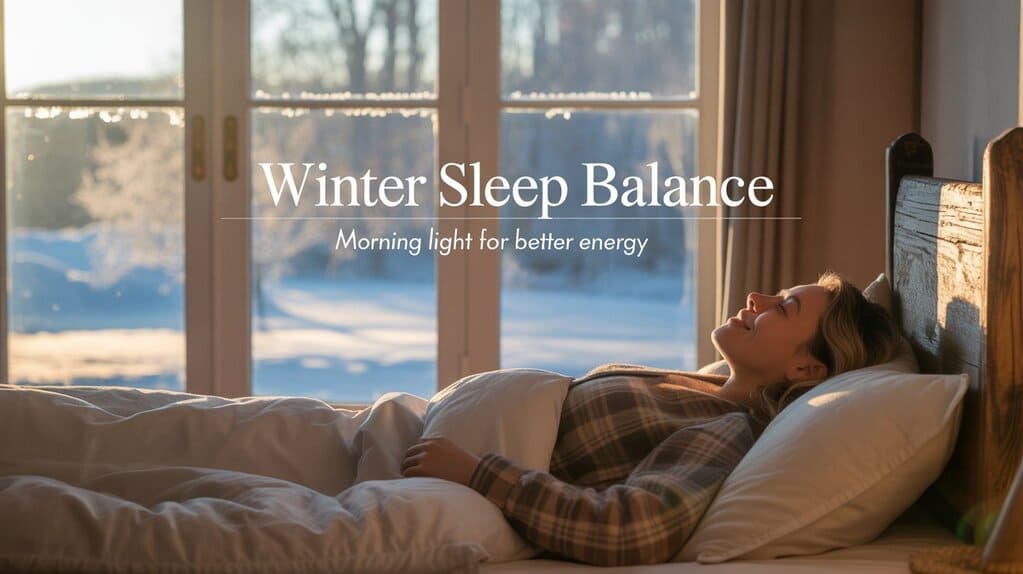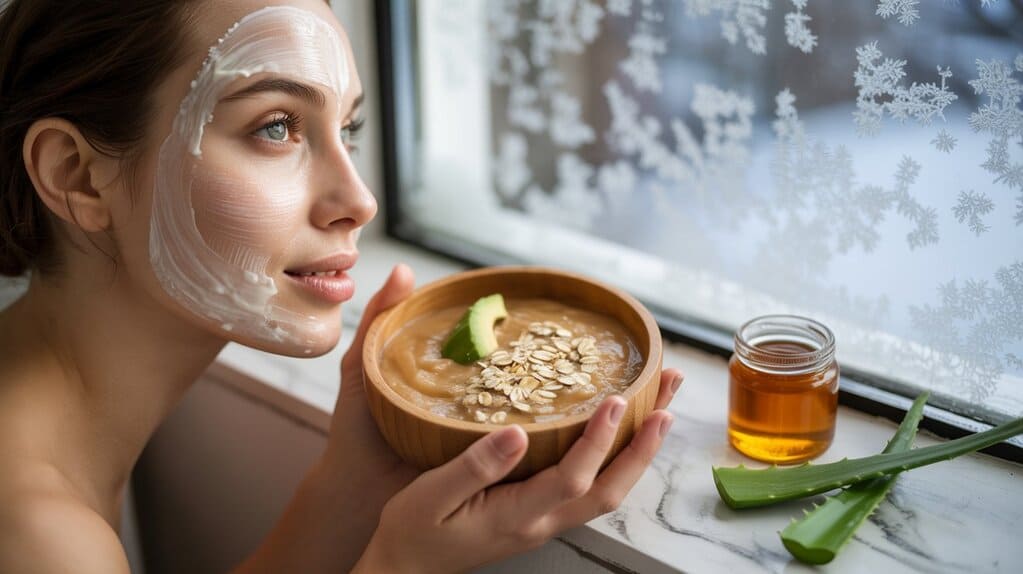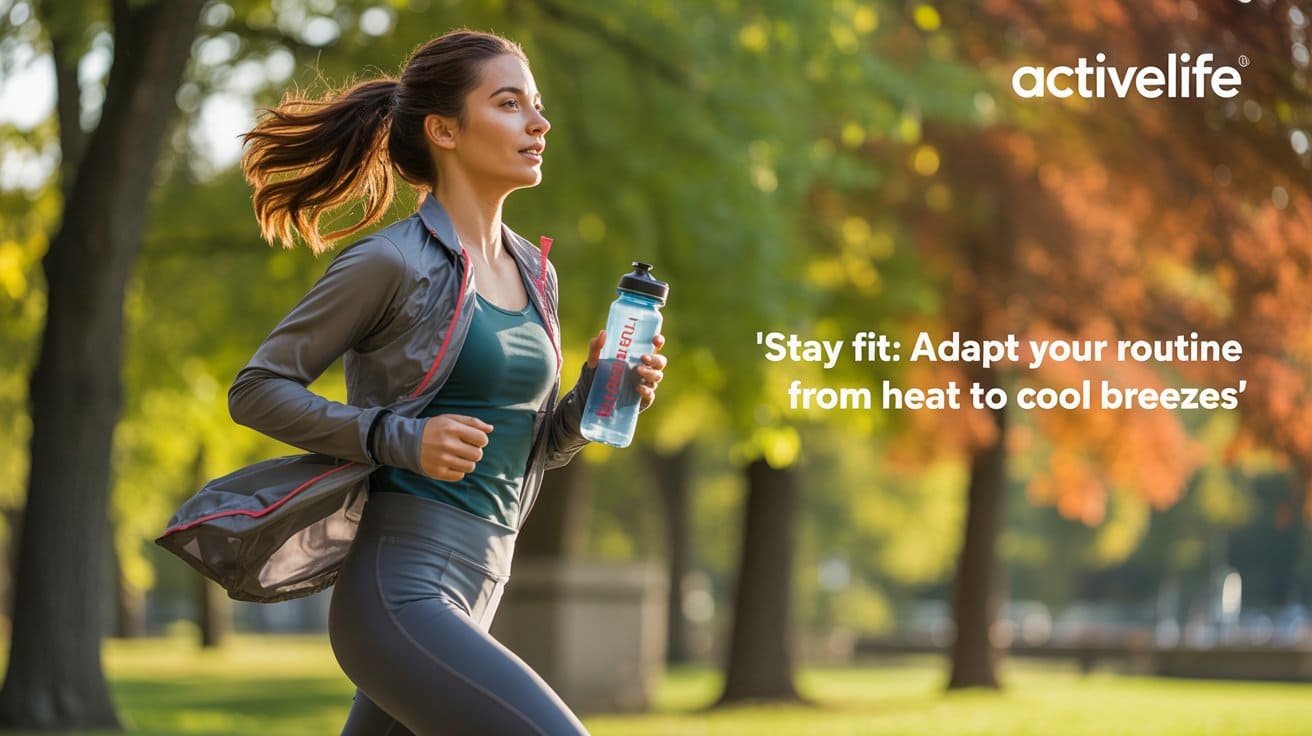
Introduction
As daylight and temperatures shift from summer heat to autumn breezes, your body and mind adapt in dozens of subtle ways—core temperature regulation, circadian rhythm timing, skin barrier behavior, hydration needs, and even your motivation to move. A truly holistic approach to wellness through these months means aligning nutrition, fitness, and beauty/skin care with what biology expects across the seasonal transition. This comprehensive guide blends practical steps with evidence from recent studies and authoritative references, so you can build routines that are safe, sustainable, and season-smart.

Body
1) Why seasonal transitions matter biologically
Your internal 24-hour clock—the circadian rhythm—coordinates sleep, digestion, hormones, and performance. Light is the primary time cue, and seasonal light changes nudge the clock earlier or later, impacting sleep timing, mood, and even training readiness. A recent analysis on seasonal variability and circadian misalignment in healthcare shift workers found greater misalignment across summer–winter changes, highlighting how light, schedule, and season interplay with health outcomes. PMC
Large organizations such as the American Academy of Sleep Medicine recommend eliminating seasonal clock changes (daylight saving transitions) because of associated health risks, emphasizing the value of a stable schedule year-round. On a practical level, consistent wake–sleep times and morning light exposure help your clock adapt during late summer and early autumn. JCSM
For general background on circadian biology, see the Wikipedia overview of circadian rhythms, which summarizes core mechanisms and entrainment principles—useful for understanding why light timing, meal timing, and exercise timing matter in seasonal shifts. Wikipédia
2) Nutrition: what to change when the weather changes
A. Vitamin D and immune resilience
Vitamin D is classically associated with bone health, but it has also been studied for respiratory infection prevention—particularly relevant as people spend more time indoors in autumn. Earlier individual participant data meta-analyses (IPD) suggested a small protective effect, strongest in those with low baseline levels and when taken regularly (not bolus). However, an updated 2024 meta-analysis (including many more participants) reported no statistically significant protection against acute respiratory infections overall, underscoring that benefits may be smaller than once thought and highly individual. The takeaway: check your level with your clinician, supplement if deficient, and don’t rely on vitamin D alone for infection prevention. PubMedThe LancetThe Washington Post
B. Hydration & electrolytes for late-summer heat
Hot, humid days linger into early fall in many regions. If you continue to train in warmth, remember that sodium is the primary electrolyte driving effective post-exercise rehydration; carbohydrate aids absorption and glycogen resynthesis. Practical methods include weighing pre-/post-workout to estimate sweat loss and targeting ~150% of fluid lost in the hours after training, with sodium added to fluid/foods as needed. PMC
C. Seasonal produce & the microbiome
While human microbiome seasonality is complex, lifestyle shifts (diet, light, temperature) likely nudge microbial communities across the year. Observational and model-organism data show seasonal patterns, but individual responses vary. Use the season to rotate fibers (e.g., apples/pears, squash, brassicas, mushrooms, oats, barley), fermented foods, and polyphenol-rich plants to support diversity and metabolic health as routines move indoors. Taylor & Francis Online
D. Macro patterning for performance
- Before warm-weather sessions: Emphasize fluids and modest sodium; choose easy-to-digest carbs (rice, oats, banana) 1–3 hours prior.
- After sessions: Rehydrate with sodium-containing fluids/foods; aim for 20–40 g protein plus carbohydrates for glycogen repletion.
- Cooling temperatures: As training shifts to cooler mornings/evenings, add slow-cooked soups/stews (legumes + whole grains + root veg), omega-3 sources (sardines, salmon, walnuts), and vitamin-C-rich produce (citrus, peppers) to support immunity and recovery.

3) Fitness: adapt your plan to heat and breezes
A. Heat acclimation (late summer)
If heat persists, structured heat acclimation (7–14 days of carefully planned exposure) improves sweating efficiency, expands plasma volume, reduces cardiovascular strain, and supports performance. For non-elite exercisers, this can be as simple as finishing a workout with a brief post-exercise hot bath or training with slightly reduced airflow. Progress gradually, monitor heart rate and perceived exertion, and prioritize hydration/electrolytes. PMCFrontiers
B. Transition to autumn
As mornings cool, leverage temperature drop for quality intervals and longer runs/rides. Cooler air reduces thermal strain, allowing higher workloads at lower perceived exertion. Keep one heat-maintenance session weekly if you expect a warm race or trip ahead; otherwise, shift toward performance sessions, mobility, and strength.
C. Weekly template you can use now
| Day | Focus | Why it fits the season |
|---|---|---|
| Mon | Strength (full-body), mobility, nasal breathing warm-ups | Builds resilience/injury prevention as outdoor volume tapers |
| Tue | Aerobic base (45–60 min) + finish with 10–15 min warm environment or hot bath (optional) | Maintains heat adaptations safely as summer wanes PMC |
| Wed | Tempo / threshold session (cooler morning) | Cooler air → better quality with less thermal strain |
| Thu | Active recovery: walk + mobility + core | Promotes recovery and posture as desk time increases |
| Fri | Intervals (VO₂ or hill reps) | Performance focus in crisp air |
| Sat | Long aerobic (outdoors); pack fluids/electrolytes if warm | Fuels adaptation; manage hydration/sodium if late-summer heat persists PMC |
| Sun | Restorative yoga, breathwork, 20–30 min morning light | Aligns circadian rhythm and mood during shorter days Wikipédia |

4) Beauty & skin: protect the barrier while humidity drops
As we move toward autumn, indoor heating and lower humidity increase transepidermal water loss (TEWL)—the passive evaporation of water through the skin—contributing to dryness, irritation, and impaired barrier function. TEWL is a widely used metric of skin barrier integrity. Evidence shows TEWL correlates positively with higher temperature shifts and low-humidity environments; several clinical and laboratory studies document seasonal and environmental impacts on hydration and barrier stability. Practical takeaway: add humectants (e.g., glycerin, hyaluronic acid) layered under occlusives (e.g., petrolatum, ceramides) as air dries out; consider a humidifier and gentler cleansing. PMC+1Wikipédia
Research in European cohorts has shown measurable seasonal shifts in facial skin parameters (hydration, elasticity, redness) with temperature and humidity changes; planning your routine by season (lighter gel creams in late summer; richer creams/balms by mid-autumn) aligns with these findings. Wiley Online Library
3-step late-summer → autumn routine
- Cleanse gently (pH-balanced, fragrance-low).
- Hydrate + trap water: apply a humectant serum; seal with a ceramide moisturizer.
- Shield daily: broad-spectrum SPF in both seasons; UV intensity remains relevant in early fall.
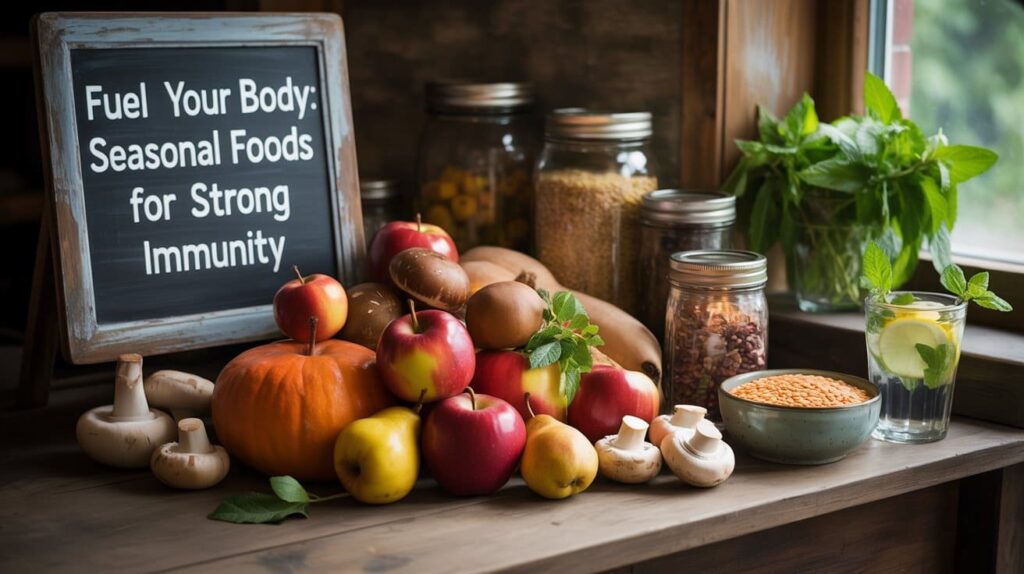
5) Mind, mood, and light: heading off seasonal dips
Shortening days can advance your circadian phase (earlier sleepiness) and in some individuals contribute to seasonal affective disorder (SAD)—a recurrent depression pattern that emerges in fall/winter. Evidence-based strategies include morning outdoor light, consistent routines, regular exercise, and (for diagnosed cases) light therapy and clinician-guided treatments. AASM and clinical summaries emphasize stable schedules and timed light exposure as first-line behavioral tools during seasonal transitions. For general orientation, see the articles on SAD and circadian rhythm; for medical evaluation and treatment options, consult clinical sources. Mayo ClinicWikipédiaJCSM
6) Key points
- Anchor your morning: 10–30 minutes of outdoor light within an hour of waking; keep a steady wake time on weekdays and weekends. JCSM
- Hydrate smarter in lingering heat: replace ~150% of sweat losses post-workout; include sodium in fluids/foods, especially the first 3–5 days of warm-weather training blocks. PMC
- Re-check vitamin D status as indoors time rises—supplement if deficient in partnership with your clinician; don’t expect broad infection prevention benefits per the latest meta-analysis. The Lancet
- Upgrade your moisturizer strategy: combine humectant + emollient/occlusive, consider a bedroom humidifier, and maintain daily SPF. PMC+1
- Periodize training: keep 1 heat-maintenance exposure if relevant, but shift toward quality intervals in cool air, plus strength and mobility for joint health. PMC

7) One-page seasonal toolkit (nutrition • fitness • skin • sleep)
| Domain | Late Summer (Hot/Humid) | Early Autumn (Cooler/Drier) |
|---|---|---|
| Hydration | Fluids + sodium; consider diluted sports drink for >60–90 min training | Maintain baseline fluids; warm herbal teas & soups; adjust sodium to sweat rate |
| Carbs/Protein | Easy carbs pre-workout; 20–40 g protein post | Add slow-cooker grains/legumes; keep protein steady |
| Micronutrients | Recheck vitamin D if limited sun; emphasize Mg/K via fruits/veg | Vitamin C foods (citrus, peppers), zinc from legumes/seafood |
| Fitness | Short heat exposures or hot baths (cautiously) + base + technique | Quality intervals, longer aerobic in cool air; add strength/mobility |
| Skin | Lightweight gel moisturizers; SPF; after-sun antioxidants | Humectant + ceramide cream; consider humidifier; SPF continues |
| Sleep/Light | Morning light + steady schedule | Morning light + possibly earlier bedtime as days shorten |
(Notes: Sodium & heat strategies based on sports hydration literature; circadian/light timing based on sleep-medicine position statements; TEWL/skin strategy based on environmental effects on barrier function.) PMC+1JCSM
Conclusion
Seasonal transitions are not simply wardrobe changes; they’re full-body recalibrations. By adjusting your nutrition (hydrate with sodium when training in heat, re-check vitamin D status as sunlight wanes, rotate seasonal plant fibers), tailoring your fitness (brief, safe heat exposures now; performance in the crisp air next), and upgrading skin care (humectant + barrier support as humidity falls), you align with the biology that underlies your daily energy, performance, mood, and appearance. Anchor everything with a stable circadian routine—consistent wake times and morning light—so the clock inside you keeps perfect time with the changing season outside.
When in doubt, start small: 10 minutes of morning light, a liter of fluids with a pinch of salt after hard sessions, a richer night cream by October, and a weekly long walk in fresh autumn air. Stack these habits, and the late-summer to early-autumn handoff becomes a confident, healthy glide instead of a stumble.
References (selected)
- Circadian rhythms & seasonal timing:
• Kim R. et al. (2025). Seasonality and circadian misalignment in shift work. PNAS/PMC. PMC
• American Academy of Sleep Medicine Position (2020): Eliminate seasonal clock changes. Journal of Clinical Sleep Medicine. JCSM
• Wikipedia overview: Circadian rhythm (general reference). Wikipédia - Vitamin D & respiratory infections:
• Martineau A. et al. (2019) IPD meta-analysis: small protective effects, greatest in deficient individuals. BMJ. PubMed
• Jolliffe D.A. et al. (2024) Updated meta-analysis: no significant reduction in acute respiratory infections overall. Lancet Diabetes & Endocrinology. The Lancet
• News summary (2025). Washington Post wellness coverage of Jolliffe meta-analysis. The Washington Post - Hydration & heat acclimation:
• Ly N.Q. et al. (2023). Sodium drives effective post-exercise rehydration; carbohydrate assists. Nutrients/PMC. PMC
• McDonald P. et al. (2025). Predictive guidance for heat acclimation protocols. Sports Medicine/PMC. PMC
• Frontiers in Physiology (2025). Personalized heat mitigation strategies. Frontiers - Skin barrier & TEWL:
• Park E.H. et al. (2023). Winter indoor conditions: temperature ↑ → TEWL ↑; hydration challenges. Annals of Dermatology/PMC. PMC
• Green M. et al. (2022). Environmental effects on TEWL; seasonal variability. Skin Health & Disease/PMC (review). PMC
• Dolečková I. et al. (2021). Seasonal variations in Caucasian women’s skin parameters. Skin Research and Technology. Wiley Online Library
• Wikipedia overview: Transepidermal water loss (general reference). Wikipédia - SAD & seasonal mood:
• Mayo Clinic: Clinical overview of Seasonal Affective Disorder (patient resource). Mayo Clinic
• Wikipedia overview: Seasonal affective disorder (general reference). Wikipédia
